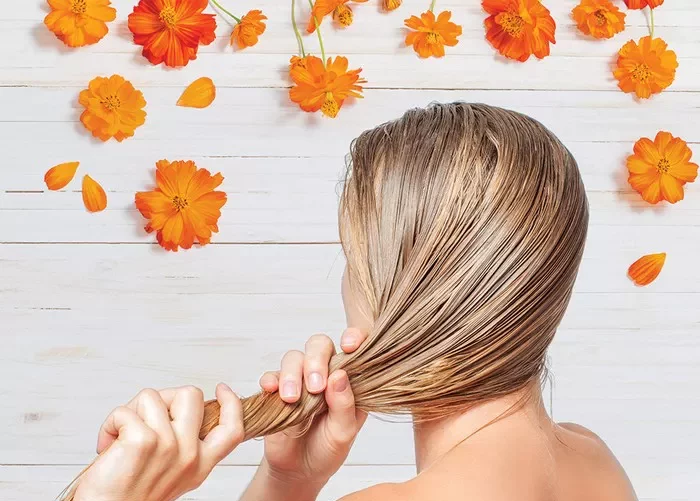Preparing hair before dyeing is a crucial step in achieving desired color results. Whether transitioning from dark to light or adding highlights, proper pre-lightening sets the stage for vibrant and even color. This article delves into the importance of pre-lightening and explores various methods to achieve optimal results.
Types of Pre-Lightening:
1. Overall Complete Head Bleach Out:
For individuals with dark brown or brunette hair aiming for blonde or platinum shades, an overall complete head bleach out is often the preferred method. To begin, it’s essential to select a quality lightener such as AGEbeautiful Crème Lightener, known for its gentle yet effective formula.
Mix the lightener according to the manufacturer’s instructions, ensuring a smooth and creamy consistency. Section the hair into manageable parts to ensure even application. Starting from the back sections and working towards the front, apply the lightener generously, making sure to saturate each strand thoroughly.
Proper saturation and sectioning are paramount to avoid uneven results. After application, monitor the lightening process closely, as timing can vary depending on hair type and desired level of lightness. Once the desired level of lightness is achieved, rinse the lightener thoroughly and follow up with a nourishing conditioner to restore moisture and maintain hair health.
2. Free-Hand-Painted Pieces:
For a more subtle and natural look, free-hand-painted pieces, also known as balayage or highlights, offer versatility and dimension. This technique involves hand-painting lighter pieces onto select sections of the hair, creating a sun-kissed effect.
To achieve this look, select a lightener like AGEbeautiful Crème Lightener, known for its precision and control. Mix the lightener to a creamy consistency and prepare the hair by sectioning it into manageable parts. Using a brush or fingers, apply the lightener to the desired sections, focusing on the mid-lengths and ends for a natural gradient.
To create a diffused effect, consider employing the technique of back-combing, gently teasing the hair before applying the lightener. This helps blend the lighter pieces seamlessly with the natural hair color, avoiding harsh lines or demarcations.
Understanding the Lightening Process:
During the lightening process, hair undergoes various color phases, transitioning from dark to light. For individuals with black hair, the initial stages may result in red tones, while those with brown hair may experience red or orange hues before reaching their desired shade.
It’s essential to understand that hair may appear lighter while the lightener is on, but the final color result may differ once rinsed and styled. Patience is key during the lightening process, as rushing can lead to uneven or brassy results. Additionally, it’s crucial to follow the manufacturer’s instructions carefully and conduct strand tests to assess the lightening progress.
Natural Methods:
In addition to commercial lightening products, natural methods can also help lighten hair gently. Fresh lemon juice, activated by sunlight, is a popular choice for subtle highlights or overall lightening.
To create a lemon juice spray, mix equal parts lemon juice and water, adding a teaspoon of hair oil for added moisture. Spray the mixture onto damp hair and expose it to sunlight for natural lightening effects. Keep in mind that while lemon juice can lighten hair, results may vary depending on hair type and color.
Safety and Damage Prevention:
While lightening hair can yield stunning results, it’s essential to prioritize safety and damage prevention. Even natural methods like lemon juice can cause dryness and damage if used excessively.
Before embarking on a lightening journey, conduct patch tests to assess potential allergic reactions or sensitivities. Additionally, ensure proper saturation and timing to avoid over-processing and breakage.
For major transformations or complex techniques, seeking professional help is highly recommended. Hairstylists possess the expertise and knowledge to achieve desired results while minimizing damage and preserving hair health.
Conclusion:
Pre-lightening is a crucial step in achieving desired hair color results, whether transitioning from dark to light or adding subtle highlights. By understanding different pre-lightening techniques, recognizing the lightening process, and prioritizing safety, individuals can achieve vibrant and beautiful hair transformations. Whether opting for commercial lighteners or natural methods, proper care and attention are essential for maintaining hair health and achieving stunning results.
FAQs
How can I lighten my hair before dying it at home?
Before dyeing your hair at home, you may want to lighten it for better color absorption and desired shade outcome. One method is using a bleach or lightening kit specifically designed for home use. Follow the instructions carefully to avoid damaging your hair. Another option is using natural lightening agents like lemon juice or honey, but these methods may yield more subtle results and require multiple applications.
Should I lighten my hair before dyeing it?
Lightening your hair before dyeing it depends on the desired color outcome. If you’re going for a lighter shade or a vibrant color, pre-lightening may be necessary to achieve the desired result. However, if you’re dyeing your hair a darker shade or similar to your natural color, pre-lightening may not be required.
What is used to pre-lighten hair?
Bleach or lightening kits are commonly used to pre-lighten hair before dyeing. These kits typically contain a developer and bleaching agent, which work together to lift the natural pigment from your hair.
Can you pre-lighten hair without bleach?
While bleach is the most effective way to pre-lighten hair, there are alternatives. Natural methods like lemon juice, honey, or chamomile tea can offer subtle lightening effects over time. However, these methods may not provide as dramatic results as bleach and may require multiple applications to achieve noticeable lightening. It’s essential to proceed with caution to avoid damaging your hair.


